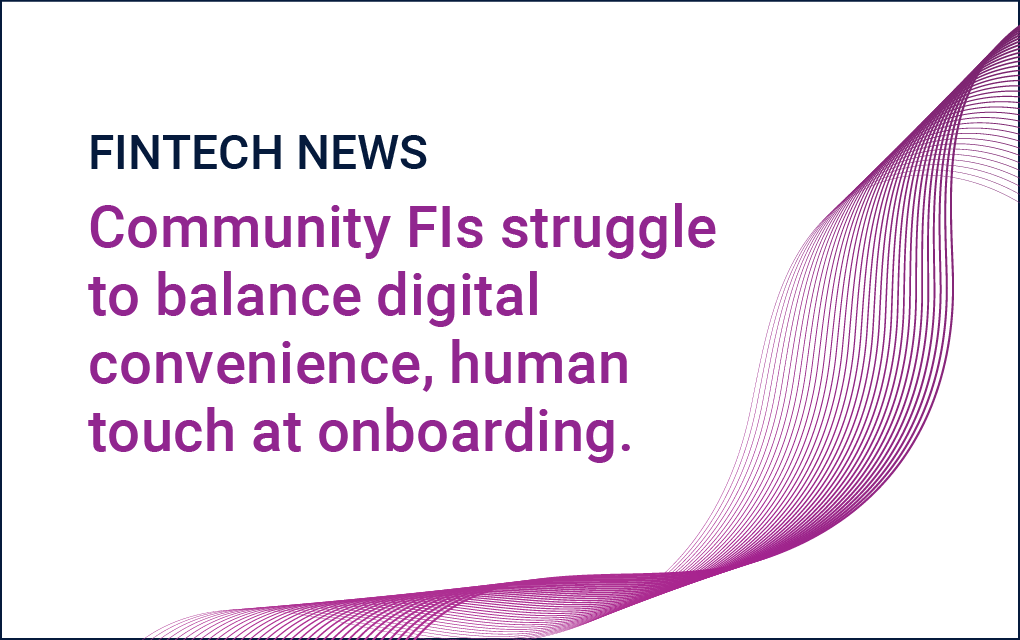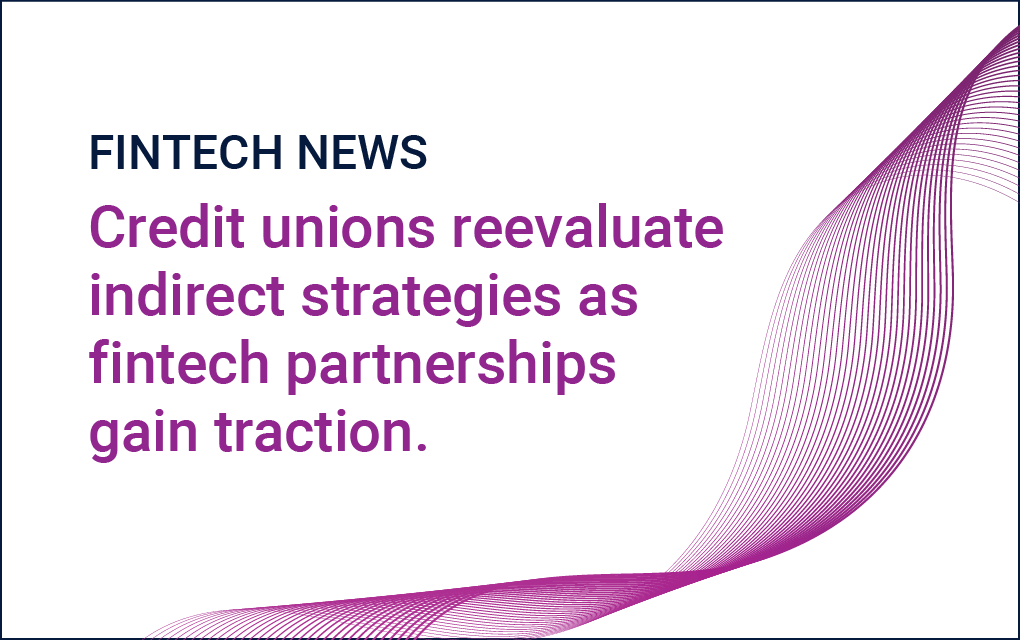FINTECH NEWS
Community FIs struggle to balance digital convenience, human touch at onboarding.
Many banks and credit unions are racing to modernize account opening while holding onto the face-to-face connections that built their reputations.
For decades, opening a new bank account was a chore: piles of forms, a trip to the branch, a wait for approval. But in an era when groceries, rides, and streaming subscriptions are just a few taps away, financial institutions are discovering that expectations for opening an account have changed dramatically — and not all of them are ready.
Many community banks and credit unions still rely on manual processes rooted in paper, pen, and in-person verification. Without digital identity tools or e-signatures, staff members must process physical documents and confirm IDs by hand. The result is friction — and increasingly, lost customers.
Every drop-off represents not just a lost account, but a lost long-term relationship, as potential members abandon lengthy applications or stall out in verification steps. For institutions built on community relationships, those losses can sting.
At the same time, compliance requirements around anti-money-laundering (AML) and know-your-customer (KYC) rules are tightening. That puts additional pressure on already stretched staff to complete the same due diligence, but faster — and with fewer errors. The combination of regulatory strain, operational cost, and rising consumer impatience has left many traditional institutions in a difficult position: modernize quickly, or risk irrelevance.
Matt Selke, president and chief executive of Georgia Heritage Federal Credit Union in Savannah, Georgia, has spent the past two months leading internal discussions about the issue. His $155 million-asset credit union, he said, has worked hard to automate parts of its online account-opening process while maintaining fraud protection — a constant challenge.
“The first challenge is the online account opening behind-the-scenes process — the how do we make the process as automated as possible while protecting against fraud,” Selke said. “We have to monitor this process every month as technology changes. Every time you think you have perfected the process, a new fraud issue arises. It’s non-stop updating.”
The credit union has seen success — around 30% of new members join online — but Selke said the work is ongoing. Even as Georgia Heritage invests in digital onboarding, it continues to devote significant resources to personalized, in-person service.
“For all the talk about ‘online and automation yada,’ we get the most success working with new members in person or on the phone,” he said. “We take the time to find out what the member really wants and tailor the products accordingly. This pays off for us over time.”
Story continued below…
FREE PAMPHLET
Stablecoins threaten small financial institutions — but there’s a fix.
If you lead a community bank or credit union, you’ve likely heard the buzz: issue a stablecoin, tokenize your deposits, or risk being left behind. Yet amid the noise, one question stands out—how can local institutions modernize without draining liquidity or sacrificing their core mission of lending to Main Street?
That philosophy reflects a deep tension for community-based institutions: how to serve a generation raised on digital convenience without abandoning the relationship-driven service that sets them apart.
“I understand it’s all about the ‘new generation,’ and it’s fun to talk about,” Selke said, “but we are not seeing a decent ROI on specifically targeting younger members.”
Many of those younger customers, he added, tend to move quickly between products and providers. Instead, Georgia Heritage focuses on helping younger members who may not qualify for the latest fintech offering. “Credit unions that still honor their roots of helping the underserved have no problem finding new members,” he said.
At Lake Ridge Bank, a $3.1 billion-asset community bank based in Middleton, Wisconsin, the balance between personal and digital service is also front of mind. Paul Manchester, the bank’s senior vice president and chief retail officer, said that while most clients still prefer to visit a branch to open a new account, many quickly transition to digital tools for everyday banking.
“Most of our clients still prefer to visit our locations to open new accounts,” Manchester said. “We believe we can deliver a great client experience when we have the opportunity to connect with people face-to-face. It allows us to better understand their needs and help them achieve their financial goals.”
Lake Ridge, he said, has made a concerted effort to improve its digital experience while keeping personal interaction central to its model. “It’s really a blend — our goal is to offer both personal and digital options so clients can choose how they want to bank with us,” he said.
Manchester acknowledged that maintaining branch locations and staff comes with higher costs, but said the investment deepens relationships and supports the bank’s community mission. “Our experts work hard to help clients invest, save, borrow, and protect their financial well-being as life changes,” he said. “That personal connection has stood the test of time.”
The need for that connection is increasingly clear as financial services become more commoditized. Fintech companies and online-only banks can launch sleek onboarding flows in weeks, but they often lack the local trust and familiarity that many community institutions still provide.
For banks and credit unions like Georgia Heritage and Lake Ridge, the path forward seems to lie in blending both worlds — digitizing the routine while preserving the relational. Consumers want convenience, but they also want confidence.
As Selke put it, “Others may be chasing Gen Z, Gen A, Gen whatever — we continue to emphasize that we are here to help. You get to talk to a live person, in person and on the phone. We are finding this to be successful across all age groups.”




